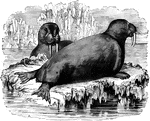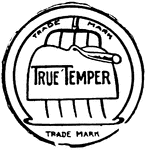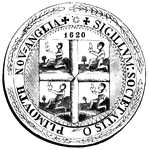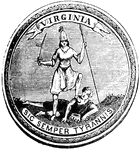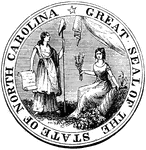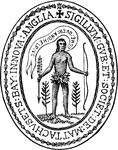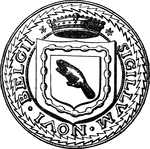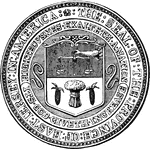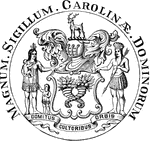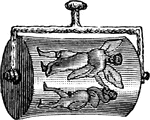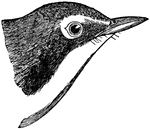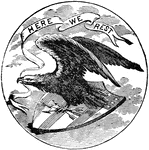
General George W. Morgan
"General Morgan, born in Washington County, Pa., September 20th, 1820, died at Old Point Comfort, Va.,…

Campaign in Kentucky
"The campaign in Kentucky, Federal troops under General Johnston, advancing on the Louisville and Nashville…

Federals Crossing
"Federal Volunteers crossing from Cincinnati to Covington on a bridge of coal boats, constructed for…

Common Seal
"The ground-color of the hair or skin, when this animal is alive and dry, is pale whitish-gray, with…
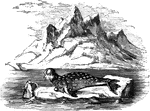
Hooded Seal
"Also called the Crested Seal, remarkable for possessing, about two inches from te extremity of the…
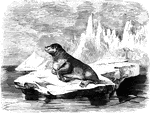
Sea Bear
"It is the size of a large bear; girth at the sholder, five feet, near the tail, twenty inches; fur…
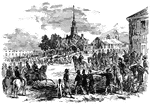
Kentucky Raid
"The raid in Kentucky- the Confederate Morgan with his guerillas bivouacking in Courthouse Square, Paris,…

Kentucky Shore
"The Federal Army, under General Pope, landing on the Kentucky Shore, opposite New Madrid, April 1st,…

Cumberland Gap
"Cumberland Gap and Heights, Tenn., from the Kentucky side. Cumberland Gap was a place of such importance…

General Daniel Tyler
"General Tyler, born in Brooklyn, Windham County, Conn., January 7th, 1797, died in New York city, November…
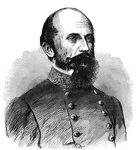
General John H. Morgan
"General Morgan, born in Huntsville, Ala., June 1st, 1826, died near Greeneville, Tenn., September 4th,…

Sherman's Campaign
"Sherman's Campaign in Georgia- the attack of the Fourteenth, Sixteenth and Twentieth Army Corps on…
Canada blue-grass
Canada blue-grass, also known as wire-grass. Suitable for soils too poor to support Kentucky blue-grass.
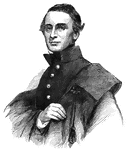
Major Robert Anderson
"Major Robert Anderson, the commander of Fort Sumter at the time of its fall, was born in Kentucky in…

Plaice
"Weighing six to twelve pounds; it feeds on mollusca, crustacea, and young fish; inhabits sandy banks…
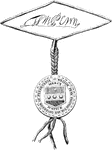
Penn's seal and signature
"Penn's Seal and Signature. This is a representation of the seal and signature of William Penn attached…

Battle of Shiloh
"Battle of Shiloh, or Pittsburg Landing, left wing- the woods on fire during the engagement of Sunday,…
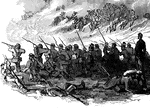
Battle of Shiloh
"Battle of Shiloh, or Pittsburg Landing, left wing- the woods on fire during the engagement of Sunday,…

Battle of Munfordville
"Battle of Munfordville, Ky., Sunday, September 14th, 1862- the Confederates charging through the abatis…

Battle of Munfordville
"Battle of Munfordville, Ky., Sunday, September 14th, 1862- the Confederates charging through the abatis…
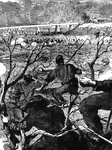
Battle of Munfordville
"Battle of Munfordville, Ky., Sunday, September 14th, 1862- the Confederates charging through the abatis…
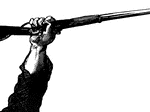
Hand with Gun
"Picture of a hand with a gun at the Battle of Munfordville, Ky., Sunday, September 14th, 1862- the…
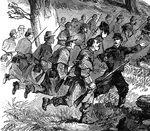
Battle of Mill Spring
"Battle of Mill Spring, on the Cumberland River, near Jamestown, between a confederate force, 8,000…
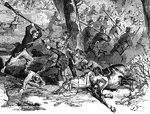
Battle of Mill Spring
"Battle of Mill Spring, on the Cumberland River, near Jamestown, between a confederate force, 8,000…

Battle of Mill Spring
"Battle of Mill Spring, on the Cumberland River, near Jamestown, between a confederate force, 8,000…
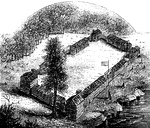
Boone's Fort
"Boone's Fort. This sketch is from a drawing by Colonel Henderson, and published in Collin's Historical…

William Tryon Seal
"Seal and signature of Tryon. William Tryon was a native of Ireland, and was educated to the profession…
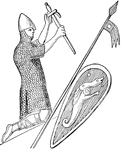
William the Conqueror
"William the Conqueror (1066-1087), as represented on his seal. Although William really ruled 'as king…
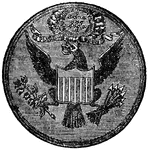
Eagle on Seal of United States
"The Eagle is a gold coin of the United States, value $10; half-eagle, $5; quarter-eagle, $2.50, double…

Hooded Seal
"The Seal, of the family Phocidæ, or seal tribe, are, of all four-limbed mammiferous animals,…

Abraham Lincoln
The sixteenth president of the United States, born in Hardin county, Kentucky, Feb. 12, 1809; died April…

Pear Design
"Also known as the cone, the palm leaf, the river loop, the crown jewel, the seal, the almond, the feather,…
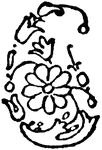
Pear Design
"Also known as the cone, the palm leaf, the river loop, the crown jewel, the seal, the almond, the feather,…

Pear Design
"Also known as the cone, the palm leaf, the river loop, the crown jewel, the seal, the almond, the feather,…

Pear Design
"Also known as the cone, the palm leaf, the river loop, the crown jewel, the seal, the almond, the feather,…
Pear Design
"Also known as the cone, the palm leaf, the river loop, the crown jewel, the seal, the almond, the feather,…
Pear Design
"Also known as the cone, the palm leaf, the river loop, the crown jewel, the seal, the almond, the feather,…
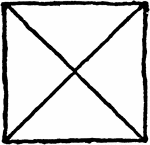
Solomon's Seal
Built on the right angle triangle and, like the Signet of David, it is found in many of the Turkish…
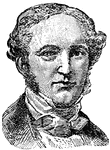
George Prentice
A journalist born in Preston, Conn., Dec. 18, 1802; died in Louisville, Kentucky, Jan. 22, 1870. He…

Seal
The general name of certain genera of carnivorous mammals, havin feet adapted for swimming, and being…
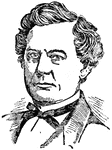
Richard Yates
The war governor of Illinois, born in Warsaw, Kentucky, Jan. 18, 1818; died in St. Louis, Missouri,…
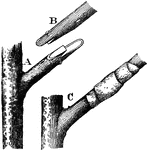
Tongue Grafting
To graft two plants together using the tongue or whip grafting approach, you must first make a sloping…
